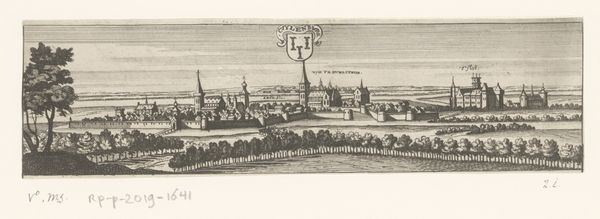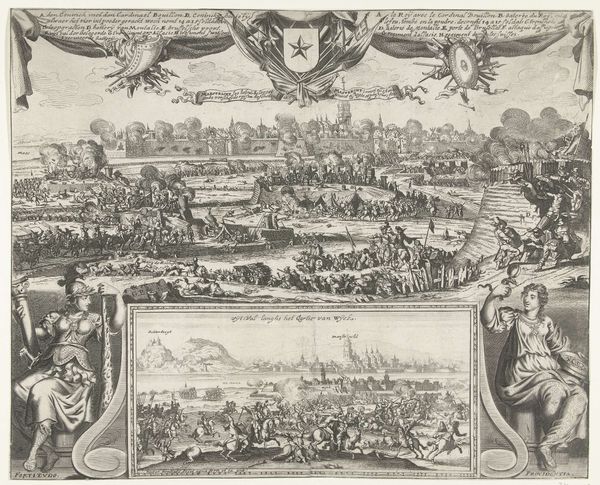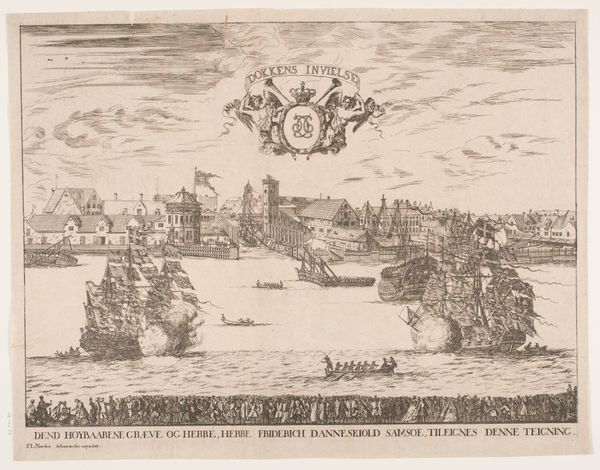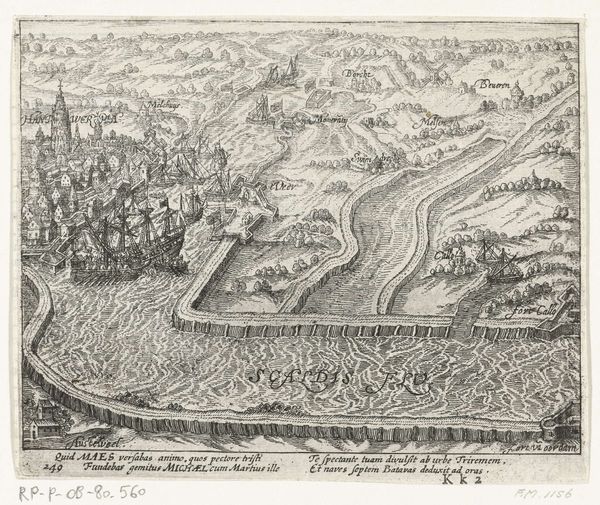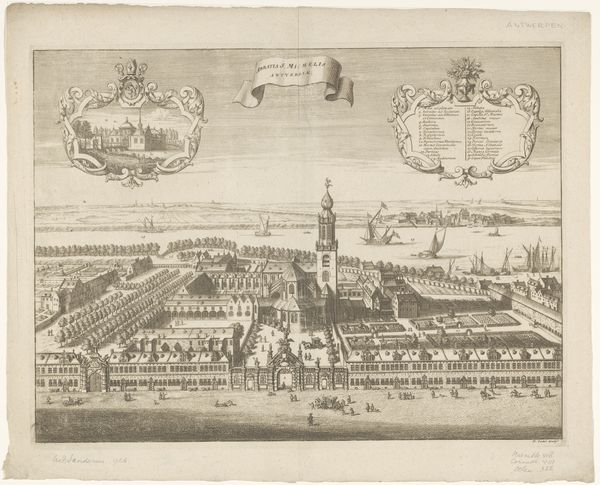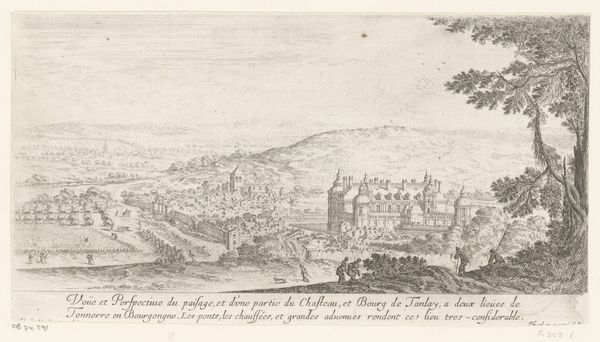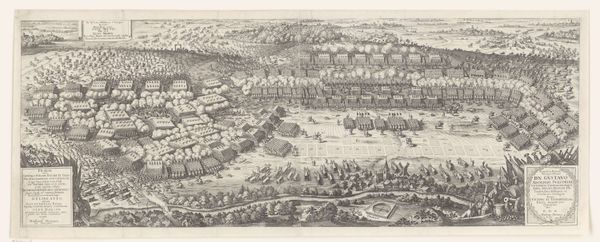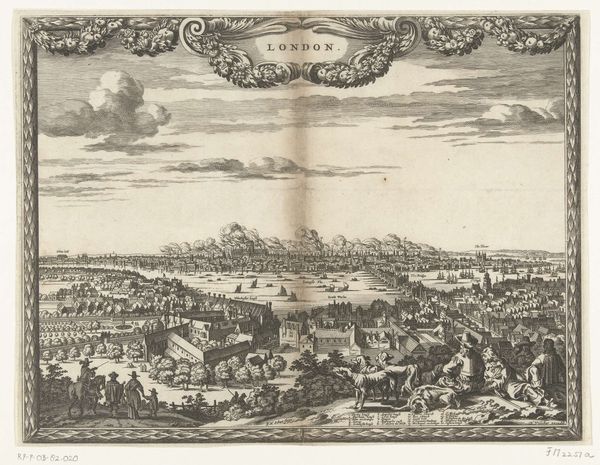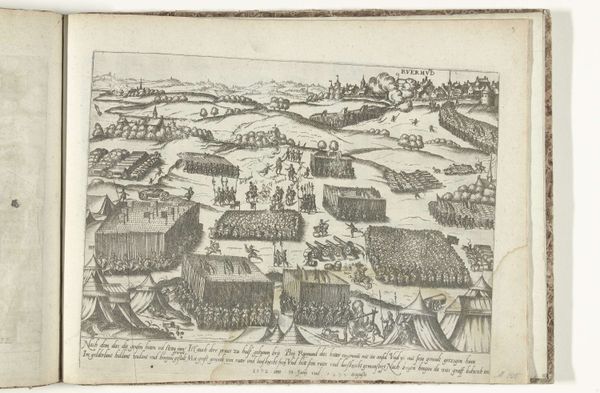
Ansbach and Coburg, View (a) of two views (a&b). 1627 - 1636
0:00
0:00
drawing, print, engraving
#
drawing
#
medieval
# print
#
landscape
#
house
#
cityscape
#
engraving
#
building
Dimensions: Plate: 7 5/16 × 19 13/16 in. (18.5 × 50.3 cm)
Copyright: Public Domain
Curator: This engraving, “Ansbach and Coburg, View (a) of two views (a&b),” by Wenceslaus Hollar, dating from between 1627 and 1636, presents us with a bird’s-eye perspective of two towns in what is now Germany. The details, rendered in incredibly fine lines, show both built environments and agricultural lands, topped by a decorative crest. Editor: My first impression is how ordered the landscape seems; the regimented rows of crops almost echo the tidy arrangement of buildings within the town walls. It's as if Hollar is emphasizing a particular kind of control and prosperity. Curator: I agree, and thinking about the historical context, we might consider the rise of early modern cartography and the development of perspective as a form of visual power. These city views weren't simply records, but tools for projecting authority. Who held power in these towns, who commissioned the print, and what messages were they trying to send about their control of the landscape and its resources? Editor: Exactly! The engraving technique itself emphasizes a sort of deliberate process, where human skill and mechanical reproduction intersect. The very act of pressing the inked plate onto paper transforms labor into reproducible image. This allows for a kind of broader access and distribution of power, in its way. How does the materiality of print change social relations through visual culture? Curator: And let's not forget that even depictions of idyllic landscapes can mask complex social inequalities. Whose labor produced those meticulously rendered fields? Who benefited from the commerce conducted within those town walls? What stories remain unrepresented by this vista? Editor: Good point. It makes you wonder about what aspects of everyday life this formalized rendering omits, whether through the choice of vantage or materials; who is granted the agency of representation and, consequently, who isn't. Curator: Considering Hollar’s meticulousness, examining this image encourages us to probe not just what's depicted, but the underlying power dynamics at play in early modern Europe and their impact on visual representation. Editor: For me, looking at the way such intricate labor culminates in a single impression opens a conversation about the conditions of its creation and how art impacts, and is impacted by society at large.
Comments
No comments
Be the first to comment and join the conversation on the ultimate creative platform.
